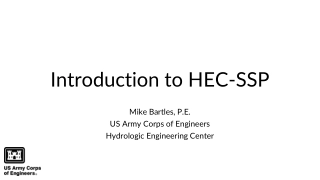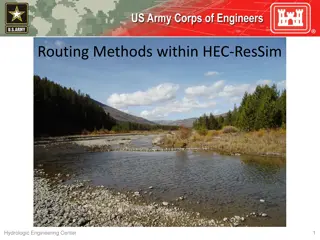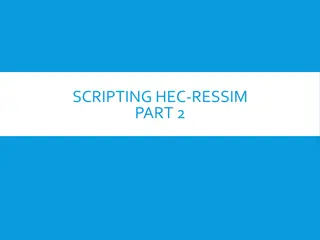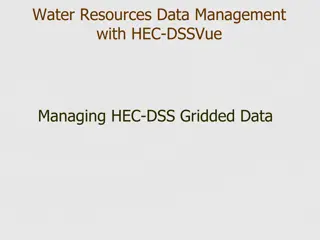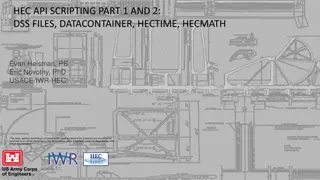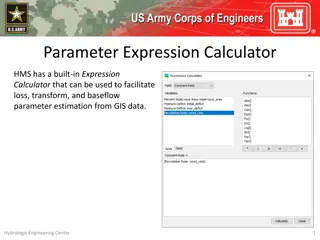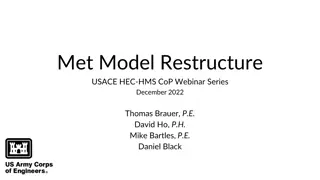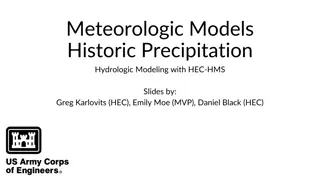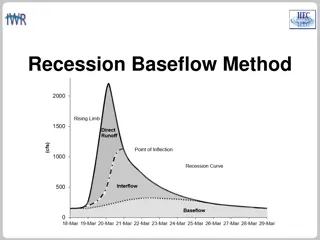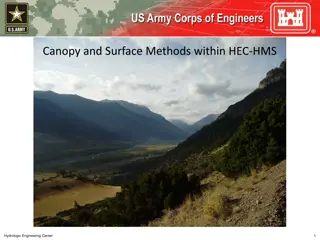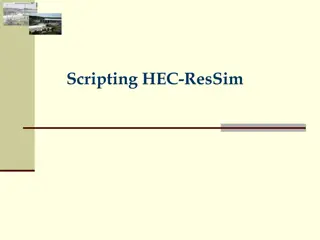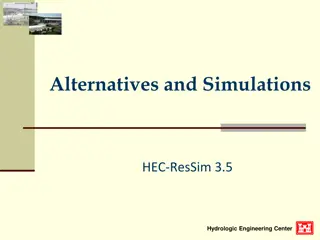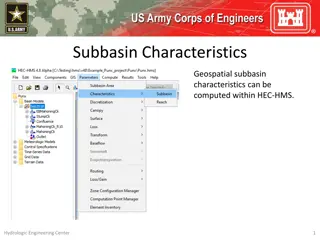Understanding Baseflow Modeling in HEC-HMS
Baseflow in HEC-HMS plays a crucial role in modeling runoff volume, consisting of groundwater flow components like interflow and baseflow. Different approaches are used to model baseflow, with HEC-HMS currently incorporating conceptual methods. The response times for interflow and baseflow differ, impacting stream flow contributions. Calibration of baseflow models is vital for accurate results, with the Linear Reservoir method ensuring volume conservation. Results of baseflow modeling are displayed in plots and tables for subbasin elements, aiding in assessing total flow and baseflow hydrographs.
Download Presentation

Please find below an Image/Link to download the presentation.
The content on the website is provided AS IS for your information and personal use only. It may not be sold, licensed, or shared on other websites without obtaining consent from the author. Download presentation by click this link. If you encounter any issues during the download, it is possible that the publisher has removed the file from their server.
E N D
Presentation Transcript
BASEFLOW IN HEC-HMS In many cases, direct runoff accounts for the flood magnitude. Baseflow is an important process to consider for modeling runoff volume. Baseflow is comprised of runoff that infiltrates into the ground, flows down gradient, and then flows back onto the land surface in small channels, streams, and rivers. Baseflow includes interflow and baseflow (or saturated groundwater flow). There are different paths water takes when moving through the ground. 2
BASEFLOW IN HEC-HMS There are different approaches to modeling baseflow, conceptual vs. process based. Currently, HEC-HMS includes conceptual methods for modeling baseflow. There are techniques for identifying baseflow contributions from hydrographs: The point of inflection (when the recession curve transitions from concave down to concave up) is where direct runoff is replaced by groundwater flow components. Plotting the hydrograph in log space shows different baseflow contributions, based on changes in slope on the recession curve. 3
INTERFLOW Interflow is where the infiltrated water travels to a stream above the groundwater level (unsaturated zone). The response time for interflow is longer than surface runoff. 4
BASEFLOW / GROUNDWATER FLOW Baseflow is where the infiltrated water percolates to a groundwater layer. The groundwater layer will contribute to stream flow when it is high enough. The response time for baseflow is longer than interflow. 5
HEC-HMS BASEFLOW METHODS The Baseflow Method can be selected for each subbasin element (using the Component Editor) or it can be selected using the global change methods tool from the Parameters menu. Baseflow parameters can be entered from the subbasin element Component Editor or from Global editors. The HEC-HMS baseflow methods are conceptual. The baseflow model should be calibrated using observations. The Linear Reservoir method is the only method to conserve volume. The other baseflow methods could result in runoff volume exceeding precipitation volume. 6
HEC-HMS BASEFLOW METHODS Baseflow results are displayed in plots and tables for Subbasin elements only. Subbasin plots show the computed runoff (total flow) and the baseflow hydrograph. Computed Total Flow Computed Baseflow Observed Flow Summary tables show baseflow volume. You can access individual time-series from the Watershed Explorer s Results tab. 7


